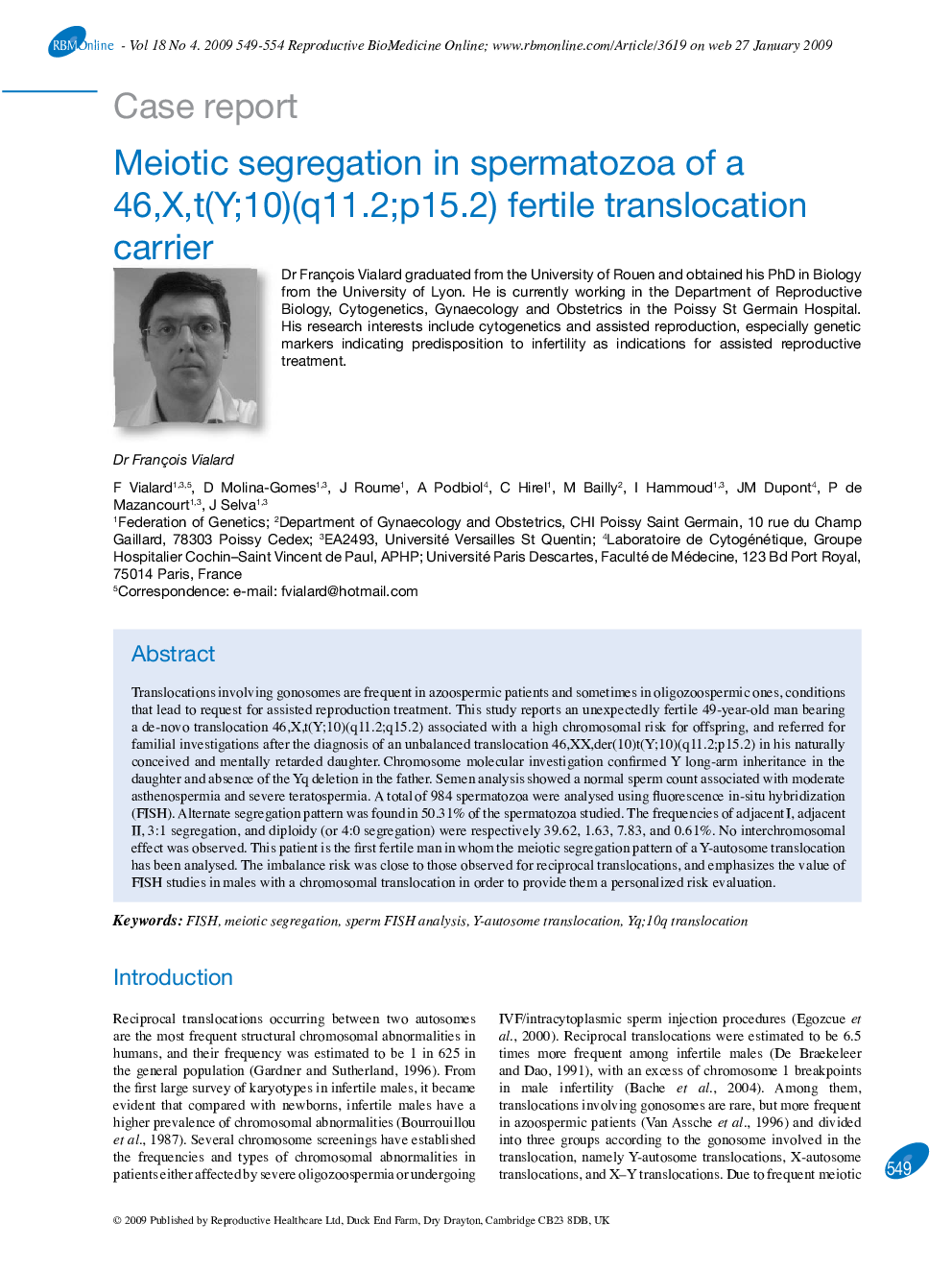| Article ID | Journal | Published Year | Pages | File Type |
|---|---|---|---|---|
| 3972432 | Reproductive BioMedicine Online | 2009 | 6 Pages |
Translocations involving gonosomes are frequent in azoospermic patients and sometimes in oligozoospermic ones, conditions that lead to request for assisted reproduction treatment. This study reports an unexpectedly fertile 49-year-old man bearing a de-novo translocation 46,X,t(Y;10)(q11.2;q15.2) associated with a high chromosomal risk for offspring, and referred for familial investigations after the diagnosis of an unbalanced translocation 46,XX,der(10)t(Y;10)(q11.2;p15.2) in his naturally conceived and mentally retarded daughter. Chromosome molecular investigation confirmed Y long-arm inheritance in the daughter and absence of the Yq deletion in the father. Semen analysis showed a normal sperm count associated with moderate asthenospermia and severe teratospermia. A total of 984 spermatozoa were analysed using fluorescence in-situ hybridization (FISH). Alternate segregation pattern was found in 50.31% of the spermatozoa studied. The frequencies of adjacent I, adjacent II, 3:1 segregation, and diploidy (or 4:0 segregation) were respectively 39.62, 1.63, 7.83, and 0.61%. No interchromosomal effect was observed. This patient is the first fertile man in whom the meiotic segregation pattern of a Y-autosome translocation has been analysed. The imbalance risk was close to those observed for reciprocal translocations, and emphasizes the value of FISH studies in males with a chromosomal translocation in order to provide them a personalized risk evaluation.
